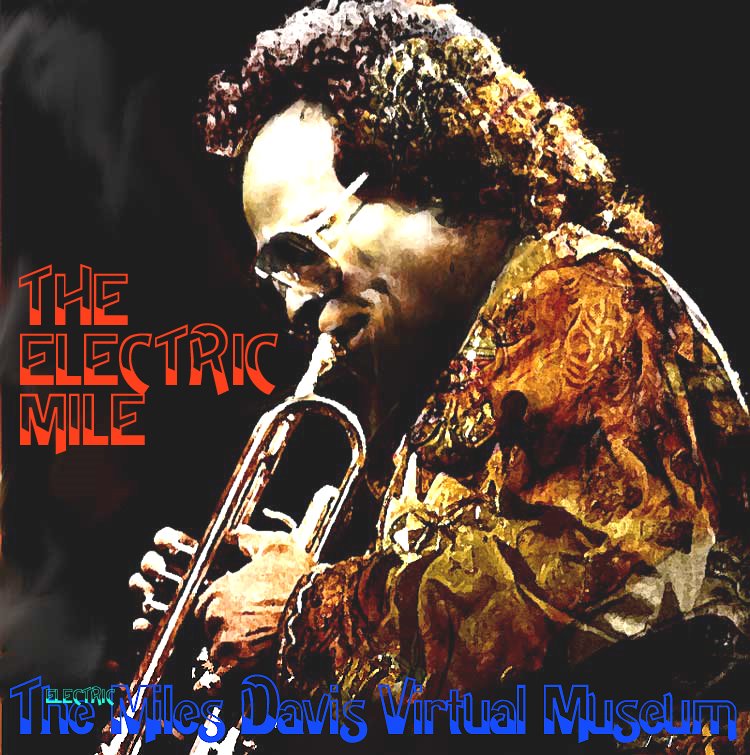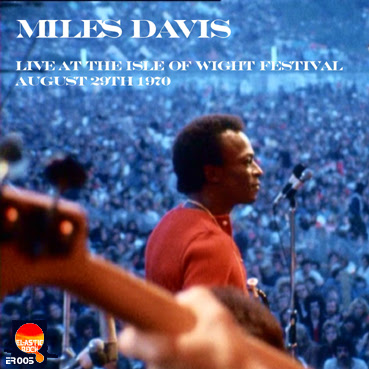Transcript from the Miles Davis Conference, May 10-11, 1996, Washington University in St. Louis. Here Macero speaks about his work with Miles Davis. 
... And talk about the, how the records were made. I met Miles several years before, I think at Birdland, when in 1954 and 1955, they had projects to do with Leonard Bernstein and I'd get a lot of samples for the album. I had written something for the very end, and Lenny didn't like it, he said it was too lugubrious, so we had to get somebody like Miles to swing this particular tune. But they did ask me to write a couple of introductions, so they got Miles, they got his group with Coltrane, and they came to the session and we became friends. I wrote a couple of introductions and picked one, and that was it. And then about a year and a half later I became his producer.
Because I joined CBS, my first record date was in 1955. It was a marvelous experience with Miles. I'd like to just play something that you're never gonna hear, ever again. I mean these tracks, I put together for CBS Sony recently are not coming out the way we had proposed them [plays music samples].
Later on, with Miles' music, I must say, you could do anything with it. He said to me, "Do whatever you want." I say, "Oh yeah, okay, I'll take care of it." So you could use the front in the back, the back in the front, the middle somewhere else, or you didn't have to use any of that. Many times when I was working on a Miles album, and editing it, I would take everything from the very beginning of the session, any little fragment, I would mix it down and put it all together. And then finally (I'd) cut the material and put it all together using the three-machine splice technique with a lot of reverb machines and all kinds of techniques that we had at that time. One guy said he was going to take a record back because he heard the music going back and forth, left and right. Well, we had a machine that did that with Miles. I mean, if you listen to some of the tracks, you hear the shifting. You say 'what the hell is going on?'
You know, even on Bitches Brew and all that stuff, that was all mechanically done in the editing room. All subject to Miles' approval. He came to the session, I mean the editing room, about six times in his lifetime while I was with him at CBS. And the one time that he did come when we were doing In a Silent Way, and everybody says that's a classic record. Sure it is a classic record. I said, "Look at it, I've mixed everything now on this particular record, I think you'd better get your ass down here because," I said, "I'm really bewildered, because I've got 30, 35 reels of quarter-in masters, and I said, I gotta cut it down to two, an A side and a B side." And I said, "If you don't come, I'm gonna make the cuts anyway." He said, "Aw, shit, I'll be right down." So he came down, and he stayed with me most of the day, and what happened was that he, we, cut out everything down to two reels of tape with eight and a half minutes on each side, and then he started to leave. I said, "Where the hell you going?" He said, "That's my record." I said, "Wait a minute, you can't do this. They're going to skin you alive, they'll do me in." They wanted to do me in anyway, because we were kind of rebels at the time.
And I said... "give me a couple days and I'll see what I can figure out," because we've got these two reels with one eight and a half, nine minutes on one side, and something on the other side. So what I did, I copied little excerpts of the very, if you listen to it very carefully, you'll hear a lot of repeats, but you don't know that they're repeats, because it sounds like a continuous song, and a continuous performance. I bridged... I made 18 minutes... I mean the eight and a half minutes or nine minutes come up to eighteen and a half, nineteen or twenty minutes on that side. I said, "I'm home free." And I did the same thing on Side B. And then, the record became a classic. But the critics wouldn't know that. I mean, that's why... I love critics, but I don't like them to review my records.

I would do all kinds of devious things, subject to Miles' approval, because every record I ever made with him, he heard before we went to press. If he didn't like it, I said, "we could change it." There was some talk on On the Corner when they had the nine bands, nine different titles, and they said, "the first pieces sounds like one band, why do you have all those titles?" Well, I was so devious in those days, that I wanted the artists to make some money. The only way the artist can make any money on his mechanical royalties would be to split up the song that the album- in the eight or the nine tracks, list 'em, he gets three cents for each side, or each track, or four cents for each track, instead of the usual four cents for 16 minutes, or whatever it might be. So I was trying to make them – I did this for Brubeck on a number of projects, and I did this on Miles whenever I could. And sometimes when I would just make up a funny foreign-y kind of cue sheet and say it's twenty minutes, so the guy gets... you paid for minutes of music. I mean, it was fun. I'm sure CBS didn't like it because they had to pay the extra money, but I didn't give a damn. I mean, I was out for the artist. That was my problem with CBS, because I would tell the artist what to do in terms of the contract.
© Free Rare Mp3 Music Downloads




 I would do all kinds of devious things, subject to Miles' approval, because every record I ever made with him, he heard before we went to press. If he didn't like it, I said, "we could change it." There was some talk on On the Corner when they had the nine bands, nine different titles, and they said, "the first pieces sounds like one band, why do you have all those titles?" Well, I was so devious in those days, that I wanted the artists to make some money. The only way the artist can make any money on his mechanical royalties would be to split up the song that the album- in the eight or the nine tracks, list 'em, he gets three cents for each side, or each track, or four cents for each track, instead of the usual four cents for 16 minutes, or whatever it might be. So I was trying to make them – I did this for Brubeck on a number of projects, and I did this on Miles whenever I could. And sometimes when I would just make up a funny foreign-y kind of cue sheet and say it's twenty minutes, so the guy gets... you paid for minutes of music. I mean, it was fun. I'm sure CBS didn't like it because they had to pay the extra money, but I didn't give a damn. I mean, I was out for the artist. That was my problem with CBS, because I would tell the artist what to do in terms of the contract.
I would do all kinds of devious things, subject to Miles' approval, because every record I ever made with him, he heard before we went to press. If he didn't like it, I said, "we could change it." There was some talk on On the Corner when they had the nine bands, nine different titles, and they said, "the first pieces sounds like one band, why do you have all those titles?" Well, I was so devious in those days, that I wanted the artists to make some money. The only way the artist can make any money on his mechanical royalties would be to split up the song that the album- in the eight or the nine tracks, list 'em, he gets three cents for each side, or each track, or four cents for each track, instead of the usual four cents for 16 minutes, or whatever it might be. So I was trying to make them – I did this for Brubeck on a number of projects, and I did this on Miles whenever I could. And sometimes when I would just make up a funny foreign-y kind of cue sheet and say it's twenty minutes, so the guy gets... you paid for minutes of music. I mean, it was fun. I'm sure CBS didn't like it because they had to pay the extra money, but I didn't give a damn. I mean, I was out for the artist. That was my problem with CBS, because I would tell the artist what to do in terms of the contract. Trumpets have an allure that is hard to describe, even when they are silent. When they are as gorgeous as the 1957 Martin Committee Model , Lot 128, that once belonged to Miles Davis, they are even more irresistible. With a blue-green finish, keys inlaid with mother-of-pearl, a separate mouthpiece, accompanied by a document concerning its provenance, the only thing missing is the genius that once played it. The lot has an estimate of $15,000 to $25,000. It failed to sell.
Trumpets have an allure that is hard to describe, even when they are silent. When they are as gorgeous as the 1957 Martin Committee Model , Lot 128, that once belonged to Miles Davis, they are even more irresistible. With a blue-green finish, keys inlaid with mother-of-pearl, a separate mouthpiece, accompanied by a document concerning its provenance, the only thing missing is the genius that once played it. The lot has an estimate of $15,000 to $25,000. It failed to sell. As if being a musical genius was not enough, Miles Davis was also a wonderful artist, and some of his vibrant sketches including a sketchbook with 25 sketches, Lot 125, that has an estimate of $6,000 to $8,000. It sold for $6,600.
As if being a musical genius was not enough, Miles Davis was also a wonderful artist, and some of his vibrant sketches including a sketchbook with 25 sketches, Lot 125, that has an estimate of $6,000 to $8,000. It sold for $6,600.





